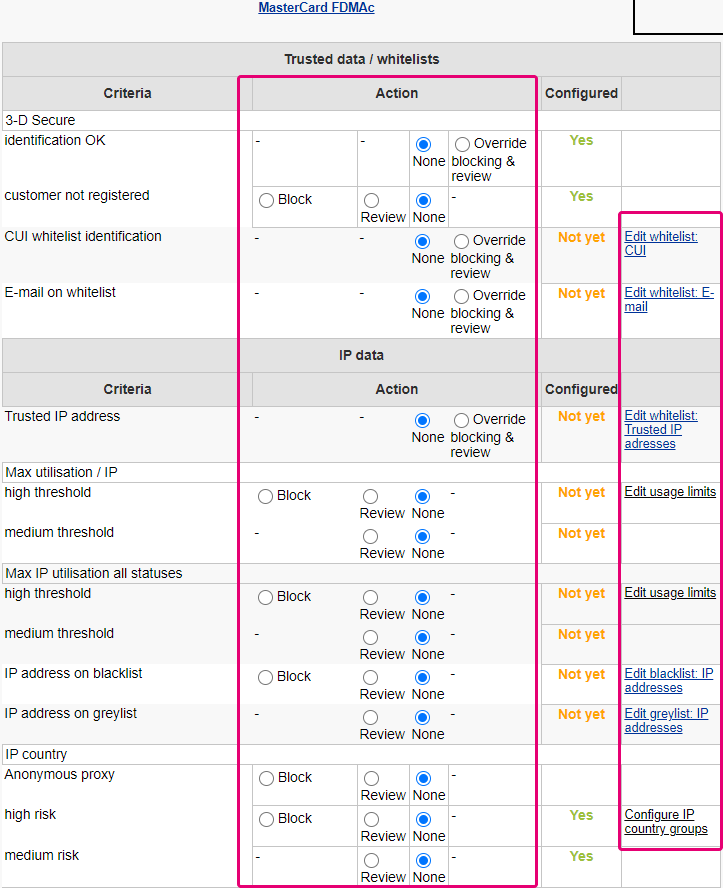New Info For Selecting Credit Card Apps
Wiki Article
What Is Considered To Be Suspicious Behavior And Can Result In A Credit Card Being Blacklisted?
Many of these behaviors and activities could raise flags of red or be considered unusual by the issuer of the card. This may lead to the card being canceled or flagged. A few examples of suspicious behavior include: Unusual Spending patterns
A sudden increase in spending or sudden transactions compared to the typical cardholder behavior can cause suspicion.
Unrecognized Transactions
The signs of fraud are evident if you see the transactions you see on your statement that aren't familiar or are not authorized and the cardholder doesn't accept.
Multiple Refused Transactions
A string of declined or failed transactions within a short time particularly if the cardholder usually has a great track record of transactions could indicate an issue.
Geographic Anomalies-
A number of transactions over just a short time from locations far from the usual spending zone for cardholders or transactions made from locations that are different from their normal spending zones can cause suspicion.
Abnormal Purchase Types
Suspicious purchases can be reported, especially for high-priced items that do not match the spending habits of the card holder.
Uncommon Online Behavior
Unexpected or unusual online activity, such as numerous failed login attempts, changes in the account's details or suspicious login attempts, might indicate potential unauthorised access.
Unusual Card Use
It is possible that the card was used in a manner that's different from its normal usage, for example, in the event that it was utilized to make international purchases while the card is used primarily locally.
Rapid Cash Advances and Transfers
A cardholder may be alerted when there are significant cash advances, transfers or any other transactions that are unusual for their spending pattern.
Frequent Card Not-Present Transactions-
If you notice a sudden spike in the number of purchases you make online or by phone (with no card present) with no prior history, this may be an indication of concern.
Issues relating to Identity Verification
Problems in verifying the person who is the cardholder's identifier during transactions, especially in cases when additional verification is required, could lead to suspicion.
These types of actions can trigger fraud detection systems and monitoring mechanisms at the card issuer, causing them to investigate, block the cards temporarily, or confirm the legitimacy of transactions.

What Does A Credit Card Being Listed As Blacklisted Signify?
If a debit or credit card is put on a “blacklist”, it means that certain transactions are not permitted until the issue has been resolved or confirmed. Blacklisting can occur for various reasons.
The card can be blocked to protect yourself is a possibility in the event of suspicions of fraud.
Security Concerns. The card may be flagged in the event of signs of potential compromise. For example, an unauthorised access to the card or data breach related to the card, or unusual spending patterns.
Problems with Identity Verification- Issues that require verification of the identity of the person who is using the card during transactions could lead to the temporary blockage of the card, particularly in cases where additional confirmation is required.
Card stolen or lost If the owner of the card has declared the card lost or stolen, the issuer might block the card to prevent any unauthorized usage until a new card is able to be issued.
Suspicious activity indicators - Any behaviour, or even activity that is associated with the card that leads to suspicions (such as multiple declined transactions, or geographical anomalies), or any unusual spending pattern could trigger a temporary exclusion.
A card that is listed on the blacklist could limit the ability of the holder to apply for credit or purchase purchases using the card. This may be until the card issuer confirms the authenticity of the account, or resolves any concerns regarding security or fraud. Cardholders should immediately contact their card issuer to report the problem, verify the transactions, and address any security issues.

Cybersecurity Experts Are Able To Monitor And Spot Cyber-Attacks, Including Those Involving Compromised Credit Card Information.
Security professionals monitor and detect dangers like compromised credit card numbers by using various techniques and tools. Some of the most common strategies and methods are: Threat Intelligence Gathering
Collecting information through various sources such as forums such as dark-web monitoring, forums, feeds and security advisories to stay current with the latest security threats and weaknesses.
Monitoring of Networks and Intrusion Detection
Monitoring network traffic using specialized software and tools, looking for anomalies or suspicious behavior that could indicate an unauthorized data breach or access.
Assessment of vulnerability and testing for penetration
Regular checks are conducted to discover weaknesses in the systems, applications or networks. Penetration tests simulate attacks on an organisation to discover weaknesses and assess its security posture.
Security Information and Event Management System (SIEM),
Implementing SIEM solutions that combine and analyze log information from various sources (such as servers, firewalls, or applications) to detect and respond to security incidents in real-time.
Behavioral Analytics-
Utilizing behavior analysis to identify unusual patterns or variations in normal user behaviour within networks and systems that could signal a compromise.
Threat Hunting
Identifying potential threats by analysing logs, data traffic and system information.
Endpoint Security Solutions
Endpoint security tools (such as anti-malware and endpoint detection and reaction tools) are employed to safeguard devices and endpoints against malicious actions.
Data Security and encryption
To decrease the chance of data breach, use security measures to protect sensitive data like credit card numbers both during travel and in rest.
In the event of an incident, we can assist with Forensics and Incident Response
Plan and implement strategies for incident response to respond swiftly to security-related incidents. Conducting forensics analysis to understand the scope, impact and the root cause of security breach.
Cybersecurity experts blend these methods with a deep knowledge of changing cyber threats, compliance regulations, and best methods to identify ways to mitigate and address cyber-related security threats, which include compromised credit card information. A proactive approach to security that is constantly monitored and threat intelligence are crucial to ensure a solid cyber defense. Have a look at the most popular savastano cc for more tips.
